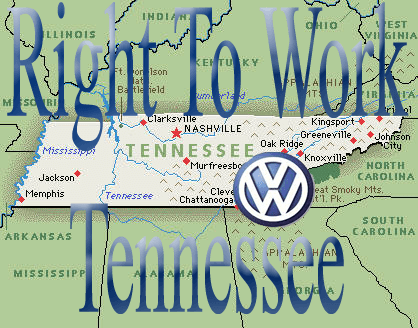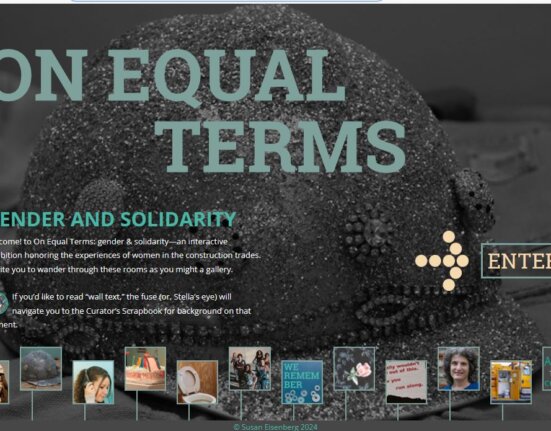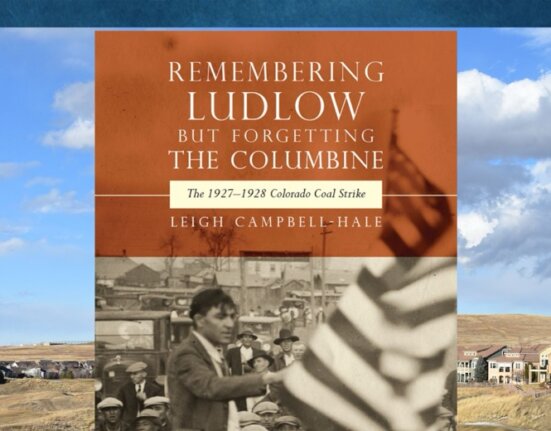Historians should think carefully as they ponder the meaning of the UAW defeat in Chattanooga. Some analysts write as though a full-fledged co-determination structure was in play. In reality, the union leadership held backroom meetings with Volkswagen executives that promised a commitment that seems all too close to the kind of company unions that labor historians should recognize from the past—joint labor-management organizations designed to lure workers away from democratic control and a voice. These “unions,” which sprung up in the early twentieth century, were declared unlawful during the New Deal because they were essentially controlled by the bosses. Why bring back this model of industrial relations?
Moreover, to fully understand this “loss” we need to evaluate the forces that pushed the counter-organizing drive. The way I see it, groups like Southern Momentum—the name of the local anti-UAW group—resembled less like a bottom-up campaign than a well-funded union-busting operation directed by outsiders. Throughout U.S. history, we can usually find the power behind these “grass-roots” organizations. Before we conclude that an essential southern culture was at work in this campaign, let’s consider some historical context.
Certainly large numbers of workers, including the slim majority who voted no in Chattanooga, opposed union representation for pragmatic reasons. Mike Jarvis, an anti-union employee, explained, “I make over $20 an hour after three years. That’s more than some U.A.W. workers make.” Jarvis believes he and his co-workers can communicate with management openly about any concerns without the assistance of union representation. The “No to Uninformed Autoworkers” website celebrates the “hard work” of “everyone,” for realizing “that we don’t need the UAW to have a voice.”
The website is a bit vague about the “everyone” involved. Yet evidence points to the roles played by outside forces, including low-level managers, anti-union lawyers, and Republican politicians like former Chattanooga mayor Bob Corker, in securing the outcome. On their webpage, the vote no campaigners repeated many the same anti-union arguments that are all too familiar to the well-tuned ear (unions are outsiders, simply want to shake workers down for their dues, etc). The silly human resource department-style language is transparent. Rather than calling themselves “workers” they identify as “team members” (See “Top Ten Reasons Team Members Should Vote No”). Scholars of union-avoidance techniques have long noted that this sort of language is designed to build labor-management harmony while ignoring the reality of hierarchical and coercive relationships on the shop floor. Human resource department “team members” and the union-avoidance organizations they collaborate with want workers to perceive their managers as one of them—as part of a smooth-running team. Of course, most workers in a diversity of industries typically don’t refer to one another as “team members.” Teams are what we watch on TV, join in grade school, and bet on.

Finally, we do know that the National Right To Work Foundation, a profoundly sleazy, corporate-backed outfit that masquerades as a proponent of worker interests, played a part in this effort. These deceitful blowhards regularly insist that they are interested in defending the “employee’s natural rights” against “big labor.” Representatives of this organization would like us to believe that organized labor, as opposed to unconstrained corporate greed, is responsible for growing rates of urban poverty, today’s accelerating gap between rich and poor, and widespread feelings of economic insecurity.
The late nineteenth and early twentieth century roots of anti-unionism from “below” reveals the unoriginality of today’s moderately slick astroturfers. In almost all cases, the spokespersons for anti-union drives in this formative stage presented themselves as genuine, worker-led movements. The first anti-union union that I’m aware of emerged in Britain in 1893, shortly after the massive London Dock strike of 1889. The National Free Labour Association (NFLA), led by William Collison, was enormously successful in helping employers and non-union “free workers.” Collison noted in his 1913 autobiography that “In twenty years eight hundred and fifty thousand workmen belonging to one hundred and fifty different trades have been registered, and the Association has fought and been successful in no less than six hundred and eighty-two pitched battles with aggressive Trade Unions in different parts of the United Kingdom.” Collison insisted that the Association was designed to help “every man pursue his Trade or Employment without dictation, molestation, or obstruction.” He announced, rather defensively, that it was not designed to “do the employer’s dirty work.”

Ten years after Collison founded his group, a few dozen workers from the Payne Foundry and Engine Company in Elmira, New York helped establish the Independent Labor League of America. These workers had refused to join a recent strike at the worksite. With help from a liberal reformer and clergyman named E. M. Fairchild, roughly twenty non-strikers launched a more modest version of Collison’s organization in February 1903. Fairchild was thrilled with the organization, since he had spent the past couple of years studying labor conflicts. After witnessing a violent streetcar strike in Albany, New York in 1901, Fairchild visited numerous picket-lines in the northeast where he developed an interest in the plight of non-unionists, men and women interested in merely making a living. He encouraged these workers, victims of union pressure, to “demand that employers run their shops as ‘open shops’.” By mid-decade, a number of cities, including New York, Albany, Detroit, Cheyenne, Wyoming, Muncie, Indiana, and Sherman, Texas became home to paradoxically-sounding unions of non-union workers. Branches provided needed labor to struck workplace, helping employers transform labor relations in ways that reduced union power.
League members in Elmira established a list of goals that mirrored the agenda of the growing, employer-led open-shop movement. For example, members pledged their refusal to stage strikes and promised “to protect independent workmen in their independence.” But they also called for “higher wages, shorter hours and better conditions” as well as protection “against unjust treatment from employers by due process of law.” Members, presumably with guidance from Fairchild, essentially called for a voice in workplace matters and improved conditions, but promised to demonstrate respect for their employers at the same time. Yet perhaps we should not be surprised that N. B. Payne, the Payne Company owner, was a leading member of the union-fighting National Metal Trades Association (NMTA), a secretive organization that in some ways functioned like today’s National Right To Work Foundation (NRTWF). Like the NRTWF, the NMTA presented itself as a champion, not an opponent, of ordinary people.
Spokespersons for these organizations were usually employers and their financially-privileged allies, not actual rank-and-file non-union workers. In early 1903, John A. Penton, a Cleveland-based publisher and employer-organizer, applauded the emergence of anti-union activism from below for actively encouraging the “general good of all concerned.” George Creel, another leading activist in the open-shop movement who would later serve as the principal pro-war propagandist during World War I, was particularly vocal in his support of “non-union unions,” which, he believed, would help “clear up an industrial situation long grown intolerable.” Creel, writing in 1903, expressed appreciation to those who sought to remove “the line between employer and workingmen.” Statements by Penton and Creel suggest that the Progressive Era open-shop movement, like today’s union-breaking activists affiliated with organizations like Southern Momentum, undoubtedly relied on a number of non-employers to do the boss’s “dirty work.”
When the National Labor Relations Act was upheld by the Supreme Court in 1937, employers and their lawyers learned to tread more carefully so as to remove any trace of association with the company union efforts. But throughout the postwar, employers continued to be caught in case after case trying to prevent unionization. Management consulting firms developed the methods of union avoidance to replace the employer-controlled company union.
While it’s clear that Volkswagen wants a works council, the footprint of employers who have placed their mark on this campaign looms behind the conservative culture that sought to drive a nail in the coffin of union decline. Given that the UAW has lost, its organizers should reconsider their commitment to the company union model, which after all was outlawed in the 1930s.







1 Comment
Comments are closed.